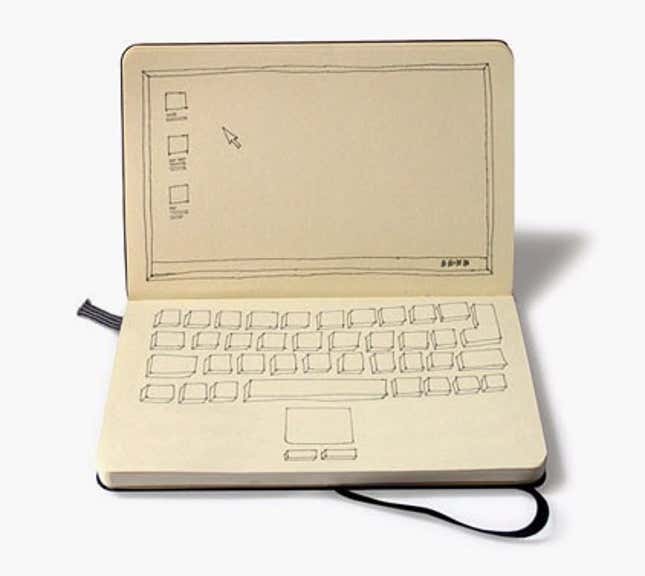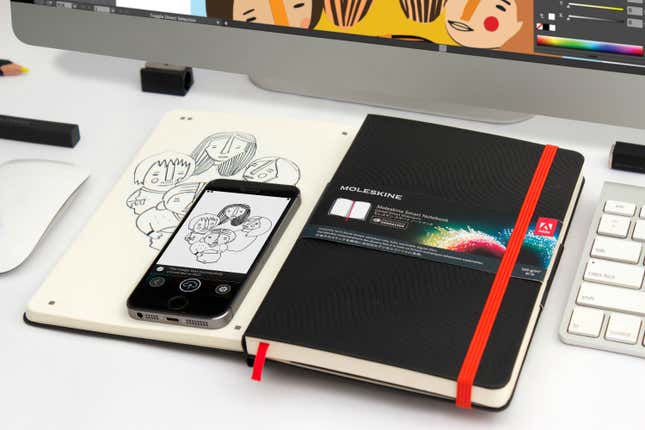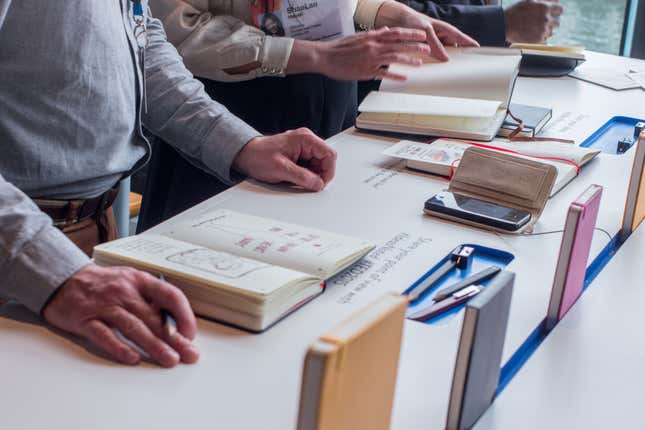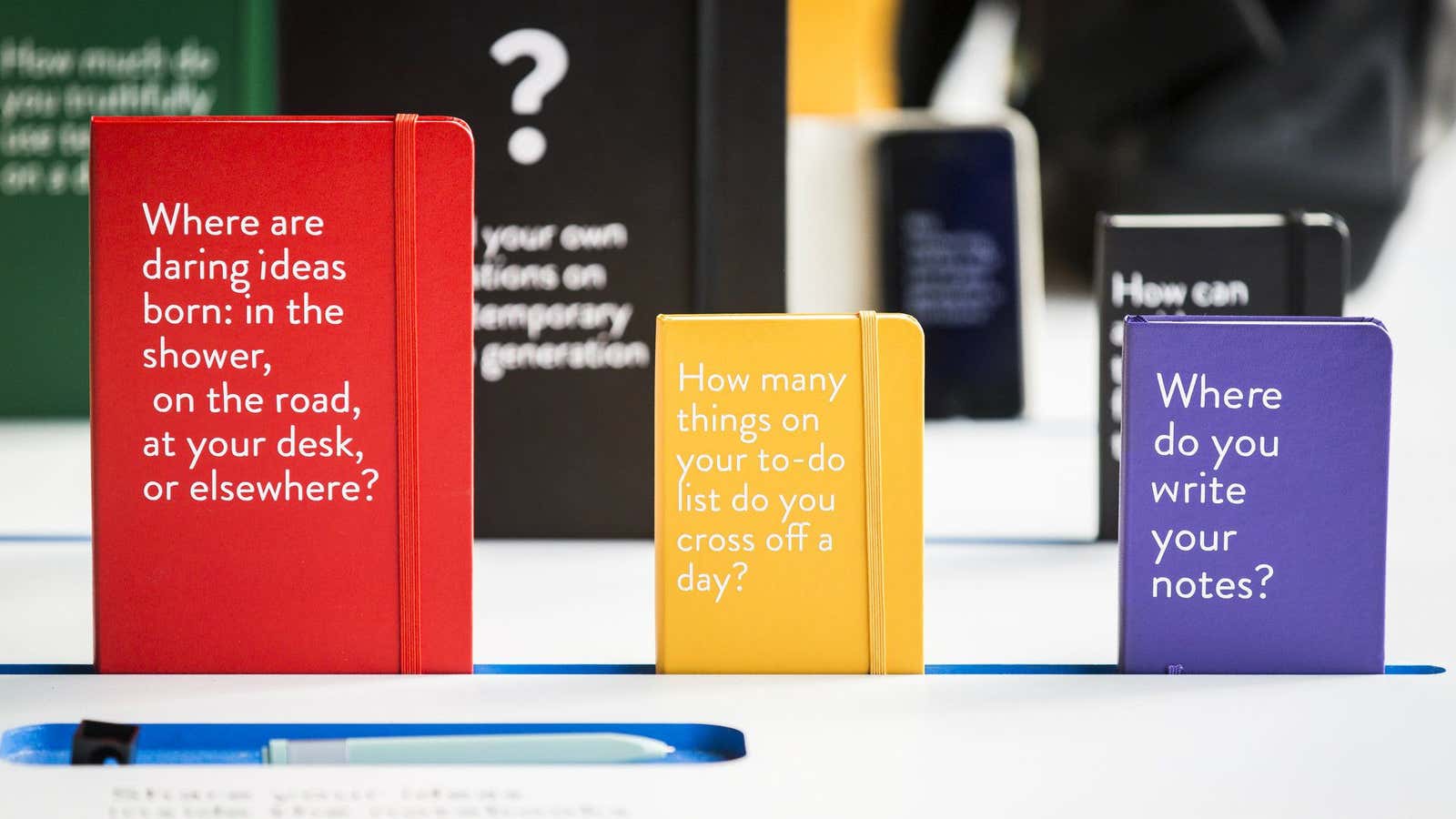Moleskine, maker of the iconic notebooks of van Gogh, Picasso and Hemingway, is having a redefining moment.

Since the launch of its IPO in 2013, the Milan-based company has been expanding its sights to the digital innovation space. For a brand with such a rich historical lore, it’s a curious move, to demote the nostalgic allure and romanticism of its literary past, and deliberately align itself with the design of digital products.

Among their first moves was a logo update in June 2013. They appended their monogram set in the most traditional of fonts, Copperplate Gothic, with a grid of squares, much like app icons. The update was met with collective dismay from the design community (which happens to be a core market segment for Moleskine).
In 2014, the company partnered with the note-taking and archiving app Evernote and launched Livescribe, a special edition notebook and smart pen bundle that converts handwritten notes into digital files. The company also partnered with Adobe Creative Cloud, through which artists can convert their sketches to Photoshop or Illustrator vector files—essentially making the Moleskine into a beautifully textured smartphone-assisted drawing tablet.

For an Italian company built on a style of notebooks that originated in France that was championed by an English writer who took it to Australia, a certain nomadism has been a part of Moleskine’s approach. But its sojourn in the digital realm, and its embrace of a kind of transmedia platform where analog and digital merge, is a bit harder to grasp. A Moleskine iPhone case, laptop bag, or app sound at the very least weird—if not paradoxical—for a brand that established its reputation with covetable paper goods.
As a major sponsor of the TED conference this year, Moleskine set up an interactive booth to expound on its digital thesis.
It floated questions such as: “What can paper teach technology?” “How can an idea travel from page to screen?” “How can hybrid analog/digital ways of working improve the end result?” To answer these questions, the company asked people to doodle on their notebooks.

But questions aside, Moleskine’s leadership appears set upon digital exploration as a brand strategy. “We want to serve the needs of the entire creative class,” co-founder Maria Sebregondi tells Quartz.
She is echoed by the company’s CEO, Arrigo Berrigo, who directly oversees strategic initiatives and partnerships for the company. ”The world for a creative is not one of just paper or just digital: They embrace both. The range of offerings … is aimed at helping this target segment further digitalize their creativity and embrace new ways of working.”
The price for the beloved brand’s product expansion remains to be seen. Already, Moleskine loyalists are mourning a perceived decline in the quality of its notebooks.
When Quartz asked Moleskine about reports of production quality issues, the company replied with this statement. “Moleskine fans are our greatest asset and we consistently listen to their feedback to incorporate it into our product research and development. If despite our best efforts, we have overlooked a defect of any kind we hope our fans will let us know.”




